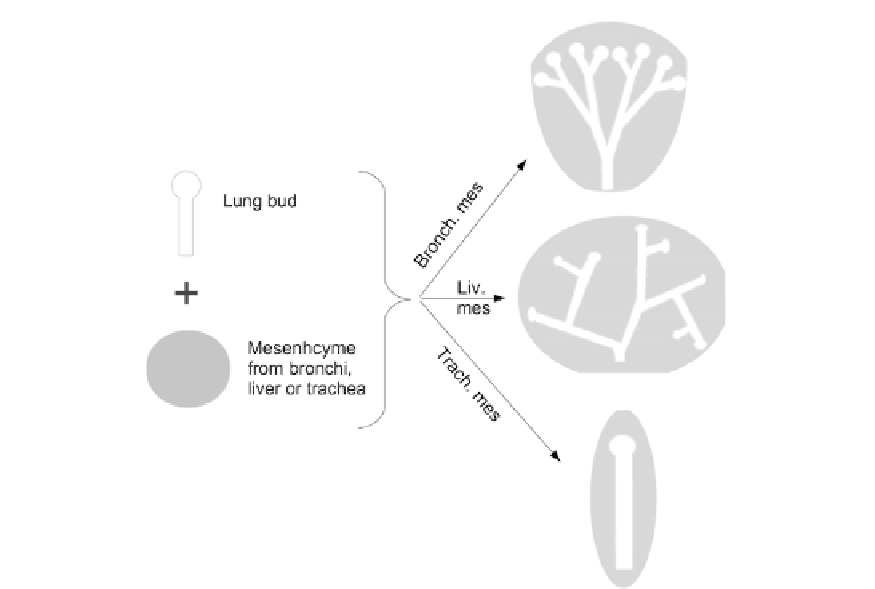Biology Reference
In-Depth Information
FIGURE 27.2
Diagram summarizing the combined results of two sets of experiments,
7,8
in which a tissue-
engineered chimaeric organ was produced using the epithelial bud of one organ, in this case the lung, and the
mesenchyme of this or another organ. When lung buds are combined with bronchial mesenchyme (their normal
partner), a typical lung branching shape results. When they are combined with liver, a branching pattern similar to
liver bile ducts is seen, whereas when they are combined with tracheal mesenchyme, no branching at all is seen. The
results imply that, at least for these endoderm-derived glandular organs, permission to branch and branch pattern
are controlled mainly by the mesenchyme.
The tissue engineering approach has also provided an excellent way to test a very basic
important hypothesis: that cell behaviour depends on the here-and-now and not on history.
A cell's history can of course determine its state of differentiation and therefore which
morphogenetic machines are present in it; but the morphogenetic behaviour of those
machines is assumed to depend only on the chemical, mechanical and electrical influences
present and not on a long memory of previous events. This hypothesis can be tested by taking
several identical developing embryonic organ rudiments, disassembling them to a simple
cell suspension in which existing positions in the organ and neighbour relations are erased,
bringing the cells together again and seeing what they do. If they organize themselves to
develop a single new organ, then they are clearly capable of forgetting what they were doing
before being disassembled, and responding correctly to their new environment. In other
words, they are capable of adaptive self-organization based on present circumstances. Their
producing one new organ from several cells proves that cells cannot simply return to their
old positions, since more than one cell would have a claim on each position and neighbour
contact.

